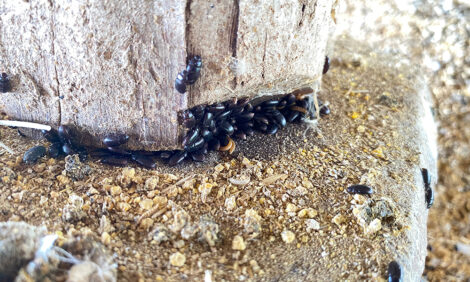



Identification of Motifs of VP2 in Chicken Anaemia Virus
Research from Taiwan has helped to explain the role of a crucial protein, VP2, in the replication of chicken anaemia virus (CAV).In a paper published in BMC Veterinary Research, Jai-Hong Cheng of Chang Gung University College of Medicine in Kaohsiung and co-authors from other institutes in Taiwan report that they have identified the NLS and NES motifs of VP2 from CAV and the interaction of VP2 with mini-chromosome maintenance protein 3.
CAV is a small non-enveloped, single-stranded, circular DNA virus and was first isolated in Japan in 1979, the authors explain. The virus belongs to the genus Gyrovirus of the Circoviridae family and causes severe immunosuppressive syndrome and anaemia in chickens. It is a ubiquitous pathogen of chickens and has a worldwide distribution. It has been shown that almost all newly hatched chicks are susceptible to CAV as a clinical syndrome but not mature chickens. Normally, chicken up to two weeks of age are very susceptible to this virus through vertical transmission via hatching eggs.
Cheng and co-authors continue that the virus typically induces aplasia of the bone marrow and damage to lymphoid tissue, which causes anaemia and acute immunodeficiency syndrome. A large number of isolates from several countries have been reported and have had full or partial sequences published.
During virus infection, three translated proteins are involved; VP2 and VP3 are detected very early, namely 12 hours post infection, while VP1 is detected only after 30 hours post infection.
VP2 is a dual-specificity phosphatase required for CAV infection, assembly and replication. The functions of the nuclear localisation signal (NLS) and nuclear export signal (NES) of VP2 in the cell, however, are poorly understood. Cheng and co-authors say that their study has identified the presence of a NLS in VP2 and showed that the protein interacted significantly with mini-chromosome maintenance protein 3 (MCM3) in the cell.
In their study, the Taiwanese group were able to predict an arginine-lysine rich NLS by software, which spanned from amino acids 133 to 138 of VP2. The critical amino acids residues between positions 136 and 138, and either residue 133 or 134 are important for nuclear import in mammalian cells based on systematic mutagenesis.
A NES was also predicted in VP2, they continued. However, the results suggest that no functional NES is present and that this protein is CRM1–independent. It was also shown that VP2 is a chromatin–binding protein and, notably, using a co-immunoprecipitation assay, it was found that VP2 association with MCM3 and that this interaction does not require DSP activity.
VP2 contains a NLS that span from amino acids 133 to 138. VP2 is a CRM1 independent protein during nuclear export and associates with MCM3 in cells, concluded Cheng and co-authors. They added that the work helps to explain the role played by VP2 in the DNA replication of CAV. Taken together, the findings suggest that VP2 may be part of a DNA pre-replication complex.
Reference
Cheng J-H., S-C. Sheu, Y-Y. Lien, M-S. Lee, H-J. Chen, W-H. Su and M-S. Lee. 2012. Identification of the NLS and NES motifs of VP2 from chicken anemia virus and the interaction of VP2 with mini-chromosome maintenance protein 3. BMC Veterinary Research, 8:15. doi:10.1186/1746-6148-8-15
Further Reading
| - | You can view the full report (as a provisional PDF) by clicking here. |
Further Reading
| - | Find out more information on chicken anaemia by clicking here. |
February 2012











